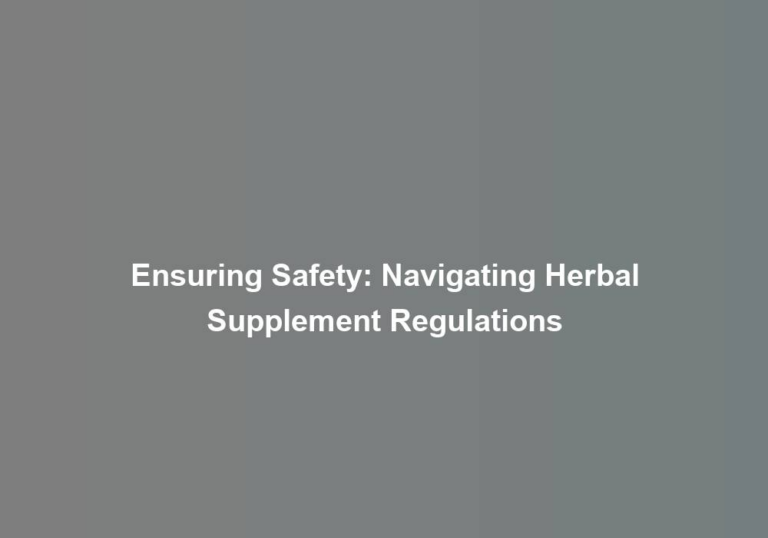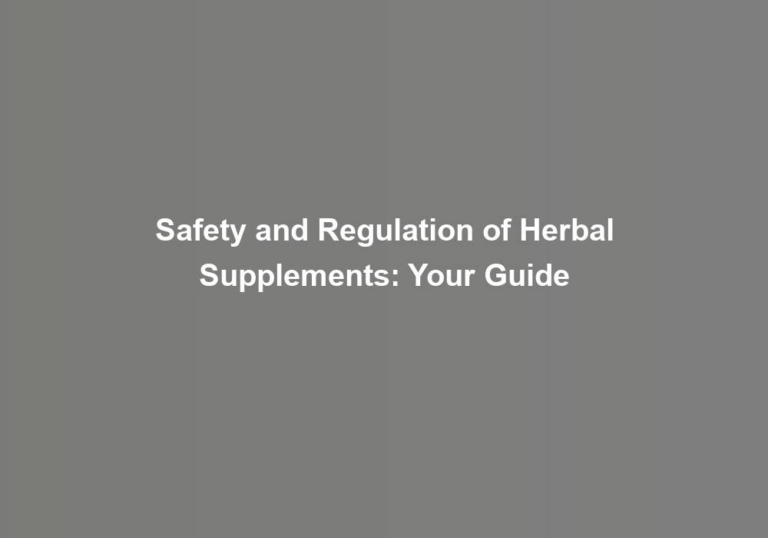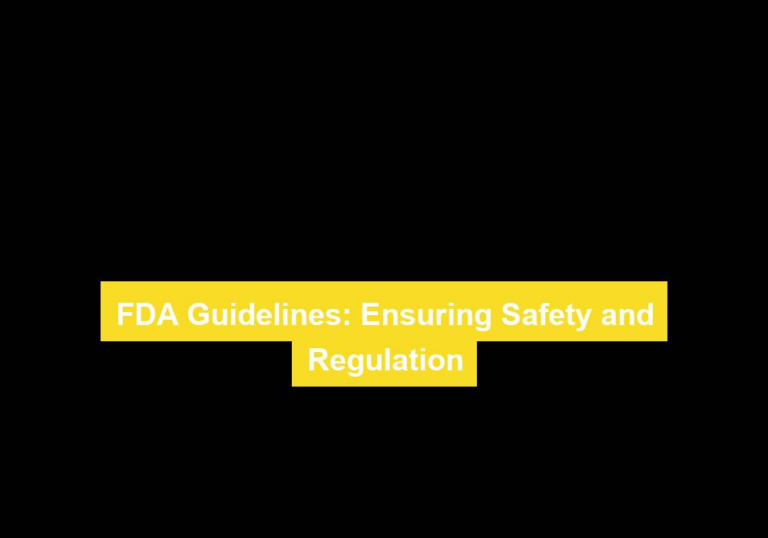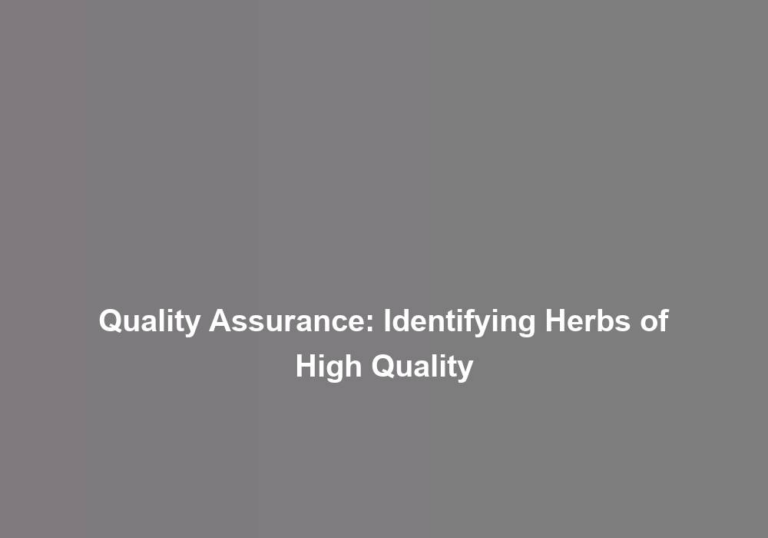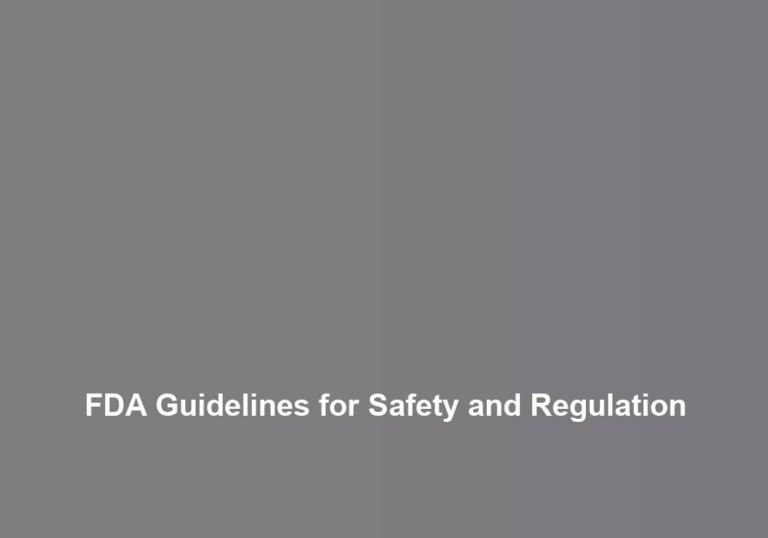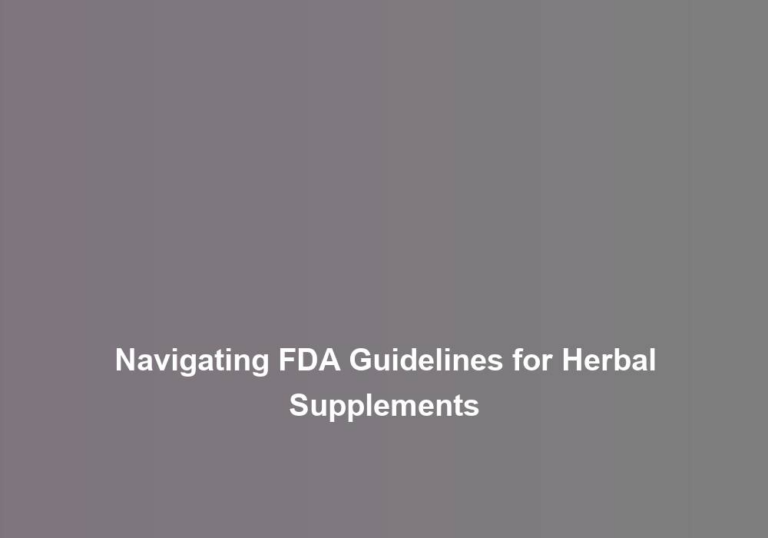Identifying Quality Herbs: Safety and Regulation
You may not be aware that the quality and safety of herbs can vary widely depending on factors such as sourcing, processing, and regulatory oversight. Understanding how to identify quality herbs and navigate safety regulations is crucial for anyone using herbal products. From understanding the regulatory framework to choosing trusted suppliers, there are key considerations to keep in mind. As you explore this topic, youG??ll gain valuable insights into the measures that ensure the safety and quality of herbs, empowering you to make informed decisions about the products you use.
Importance of Quality Herbs
Quality herbs play a crucial role in ensuring the safety and efficacy of herbal products, making it imperative to thoroughly assess and verify their quality. Herbal authenticity is essential for maintaining market transparency and ensuring that consumers receive products with the health benefits they expect. The authenticity of herbs is directly linked to the efficacy of the final product. For instance, if a product claims to provide certain health benefits based on the presence of specific herbs, the authenticity of those herbs directly impacts the productG??s efficacy. Without quality herbs, the desired health benefits may not be realized, and the product may not deliver the intended results.
To maintain market transparency, it is vital to establish and enforce standards for herbal authenticity. This includes rigorous testing and verification processes to ensure that the herbs used in products are indeed what they are claimed to be. Inconsistencies in the quality of herbs can lead to variations in the productG??s efficacy, which can ultimately impact consumer trust and the reputation of the herbal industry.
Furthermore, ensuring the quality of herbs also involves monitoring the entire supply chain, from cultivation and harvesting to processing and distribution. This comprehensive approach is necessary to maintain the integrity of herbal products and provide consumers with the confidence that they are receiving safe and effective products. Ultimately, the importance of quality herbs cannot be overstated, as they form the foundation of herbal products and play a pivotal role in delivering the expected health benefits to consumers.
Safety Considerations
When considering the safety of herbs, it is crucial to ensure that they are sourced from reputable suppliers who adhere to strict quality control measures. Additionally, understanding the regulatory compliance requirements for herbal products is essential to guarantee their safety for consumption. By prioritizing herb sourcing safety and compliance, you can mitigate potential risks and ensure the quality of the herbs you use.
Herb Sourcing Safety
To ensure the safety of herb sourcing, it is imperative to thoroughly assess the growing and harvesting conditions, as well as the handling and transportation methods used throughout the herbG??s supply chain. When evaluating herb sourcing safety, consider the following:
- Herb authentication: Confirm the authenticity of the herb through scientific testing and documentation to ensure it meets quality standards.
- Supplier transparency: Choose suppliers who are open about their growing and harvesting practices, as well as their quality control measures.
- Environmental factors: Evaluate the impact of environmental conditions on herb safety, such as pollution, pesticides, and soil quality.
- Transportation and storage: Ensure that proper transportation and storage methods are employed to prevent contamination and maintain the herbG??s integrity.
Regulatory Compliance Requirements
Assessing regulatory compliance requirements for herb sourcing safety involves scrutinizing the adherence to industry standards and legal mandates throughout the herbG??s supply chain. Herb testing ensures the absence of contaminants and verifies the potency of active compounds. Product labeling must accurately reflect the herbG??s origin, composition, and potential allergens to facilitate safe usage. Safety standards demand meticulous documentation of the herbG??s journey from cultivation to distribution, including storage and transportation conditions. Industry compliance necessitates adherence to Good Agricultural and Collection Practices (GACP) and Good Manufacturing Practices (GMP) to maintain quality and safety. The table below outlines key regulatory compliance requirements for herb sourcing safety.
| Regulatory Compliance Requirements | Description |
|---|---|
| Herb Testing | Ensures absence of contaminants and potency verification |
| Product Labeling | Accurately reflects herbG??s origin, composition, and allergens |
| Safety Standards | Demands meticulous documentation and adherence to GACP and GMP |
Adhering to these requirements guarantees the safety and quality of herbs in the market.
Regulatory Framework
You must understand the legal requirements for herbs and the government oversight of herbs to ensure compliance with regulatory frameworks. These frameworks play a crucial role in maintaining the safety and quality of herbs in the market, as well as in protecting consumer health. By familiarizing yourself with the regulatory framework, you can navigate the complex landscape of herb regulations and make informed decisions about the herbs you choose.
Legal Requirements for Herbs
The regulatory framework governing the legal requirements for herbs is complex and varies across different regions and countries. When it comes to legal requirements for herbs, it is essential to understand the following:
-
Herb Testing: Different regions have specific testing requirements to ensure the safety and quality of herbs. This may include testing for contaminants, heavy metals, and pesticides.
-
Purity Standards: Legal requirements often outline purity standards that herbs must meet to be deemed safe for consumption. This can include guidelines on the maximum allowable levels of impurities and the acceptable composition of the herb.
-
Labeling Regulations: There are strict regulations regarding the labeling of herbal products, including requirements for ingredient lists, dosage instructions, and safety warnings.
-
Documentation and Record-Keeping: Legal frameworks often mandate thorough documentation and record-keeping practices to ensure traceability and accountability in the herb supply chain.
Understanding and adhering to these legal requirements is crucial for ensuring the safety and quality of herbal products.
Government Oversight of Herbs
When ensuring the safety and quality of herbal products in compliance with legal requirements, it is imperative to understand the intricate regulatory framework of government oversight governing the production and distribution of herbs. Government supervision plays a crucial role in ensuring that herbal products meet industry standards and are safe for consumption. Regulatory agencies, such as the Food and Drug Administration (FDA) in the United States, enforce laws and regulations that govern the manufacturing, labeling, and marketing of herbal products. These regulations often require adherence to good manufacturing practices (GMP) to ensure the quality and safety of herbal products. Additionally, industry standards set by organizations like the American Herbal Products Association (AHPA) provide guidelines for best practices in the herbal industry, further contributing to the oversight and regulation of herbal products. Understanding and complying with these government regulations is essential for ensuring the safety and quality of herbal products.
Identifying Trusted Suppliers
Quality herb identification begins with identifying trusted suppliers who adhere to strict quality control standards and ethical sourcing practices. When vetting potential suppliers, consider the following factors to ensure the authenticity and quality of the herbs:
-
Certifications and Compliance: Look for suppliers who hold relevant certifications such as Good Manufacturing Practice (GMP) and Organic certification. These certifications ensure that the supplier complies with industry standards and regulations, guaranteeing the quality and safety of the herbs.
-
Traceability and Transparency: Choose suppliers who provide detailed information about the sourcing, cultivation, and processing of the herbs. Transparency in the supply chain helps verify the authenticity and quality of the herbs, allowing you to trace their origins and ensure they meet your standards.
-
Quality Control Measures: Inquire about the supplierG??s quality control processes, including testing for purity, potency, and contaminants. Reliable suppliers conduct thorough quality control tests to ensure that the herbs meet specified standards and are free from harmful substances.
-
Reputation and Reviews: Research the supplierG??s reputation in the industry and seek feedback from other buyers. Positive reviews and a strong reputation indicate that the supplier consistently delivers high-quality, authentic herbs.
Quality Control Measures
Consider implementing stringent quality control measures to ensure the purity and safety of the herbs sourced from suppliers. Quality control measures are essential to guarantee the efficacy and safety of herbal products. One crucial aspect of quality control is herb testing, which involves analyzing the raw materials for contaminants, potency, and authenticity. Additionally, quality assurance protocols should be established to validate the quality of the herbs at various stages of the supply chain, ensuring that they meet regulatory standards and are free from adulteration.
To ensure the quality and safety of sourced herbs, it is imperative to implement robust quality control measures. This can be achieved through meticulous testing and verification processes. The following table provides an overview of the key quality control measures that should be considered when dealing with herb suppliers:
| Quality Control Measures | Description |
|---|---|
| Herb Testing | Testing for contaminants, potency, and authenticity of the herbs. |
| Quality Assurance | Establishing protocols to validate the quality of herbs at different supply chain stages. |
| Supply Chain Traceability | Implementing systems to trace the origins and movements of herbs throughout the supply chain. |
| Batch Testing | Testing individual batches of herbs to ensure consistency and quality. |
| Regulatory Compliance | Ensuring adherence to regulatory standards and guidelines for herbal products. |
Consumer Guidelines
To ensure the safety and efficacy of herbal products, consumers should carefully review the product labels for information regarding the herbG??s origins, testing, and compliance with regulatory standards. When purchasing herbal products, itG??s vital to be an informed consumer. Here are some essential guidelines to consider:
-
Herb Testing: Look for information on whether the herb has undergone testing for purity, potency, and potential contaminants. Testing for heavy metals, pesticides, and microbial content is crucial to ensure the safety of the product. A reputable manufacturer will provide detailed information on the testing methods used and the results obtained.
-
Product Labeling: Pay close attention to the product label for the herbG??s scientific name, part of the plant used, and any additional ingredients. The label should also indicate any certifications, such as organic or non-GMO, which can provide further assurance of quality.
-
Regulatory Compliance: Check if the product complies with regulatory standards set by organizations like the U.S. Pharmacopeia (USP), NSF International, or Good Manufacturing Practices (GMP). Compliance with these standards ensures that the product has been manufactured under strict quality control measures.
-
Manufacturer Transparency: Choose products from manufacturers who are transparent about their sourcing, production processes, and quality control measures. Access to information about the companyG??s ethical and sustainable practices can help you make an informed decision about the productG??s authenticity and quality.
Conclusion
In conclusion, when it comes to identifying quality herbs, safety and regulation are paramount. Remember, G??you get what you pay for.G?? By following regulatory guidelines and sourcing from trusted suppliers, you can ensure the highest quality herbs for your needs. With proper quality control measures in place, consumers can feel confident in the products they purchase. Always prioritize safety and quality when it comes to herbal products.


